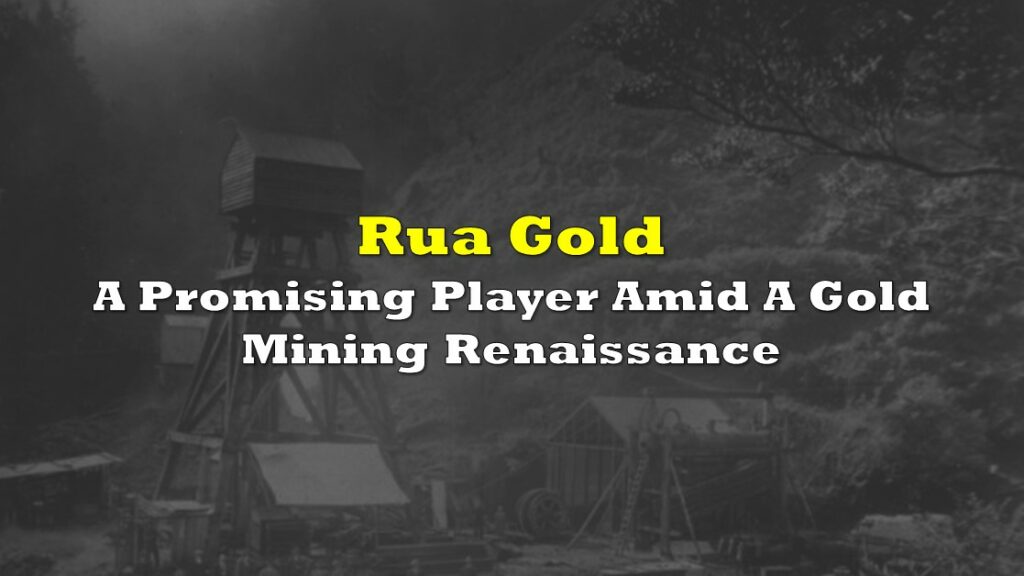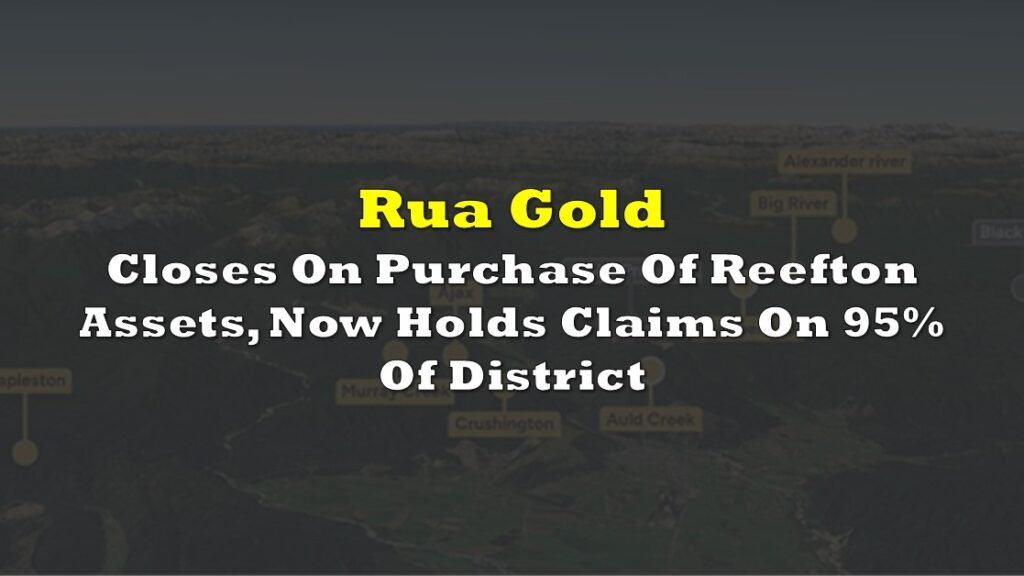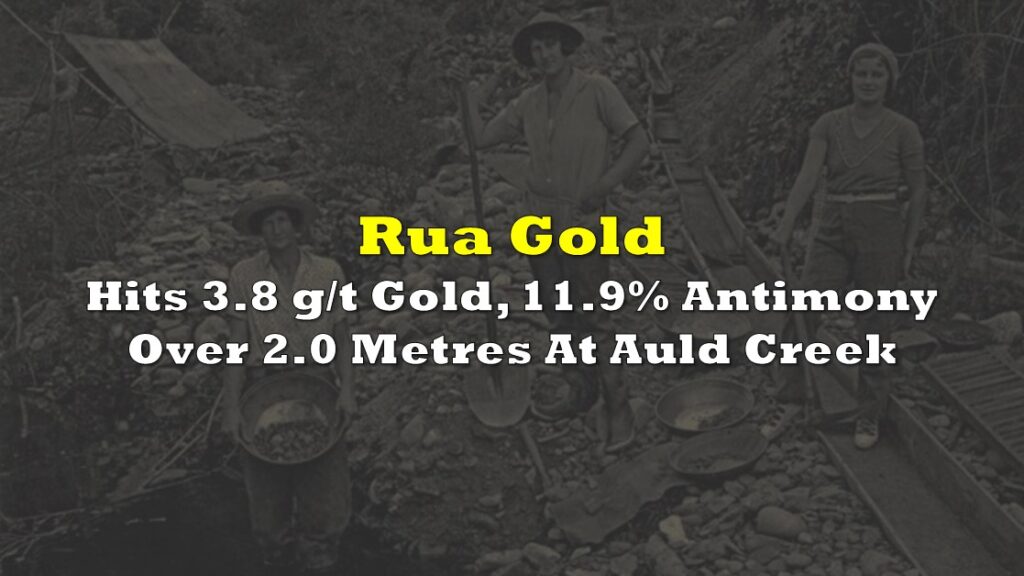FULL DISCLOSURE: This is sponsored content for Rua Gold.
The history of gold mining in New Zealand dates back to the 1850’s with a discovery made by Charles Ring, who found a small piece of gold in the Coromandel region of the North Island. A decade later, the West Coast of the South Island experienced its first discovery.
The West Coast gold rush began in 1864 when prospectors discovered gold near the Taramakau River. This initial find quickly led to a flood of miners from around the world, including many from Australia and China. The rugged terrain and dense bush of the West Coast presented significant challenges for these early prospectors, who had to cut their way through the wilderness to reach potential goldfields.
The West Coast goldfields were primarily alluvial, meaning the gold was found in the gravels of riverbeds and could be extracted through methods such as panning, sluicing, and dredging. However, some quartz reefs were also discovered, leading to the establishment of hard rock mining operations.
The gold mining industry on the West Coast peaked in the late 19th century, with up to 20,000 kilograms of gold pulled out of the ground in a single year, but began to decline in the early 20th century as easily accessible gold deposits were exhausted.
Gold mining on the west coast today
Gold mining in New Zealand, particularly on the West Coast of the South Island, is currently experiencing a resurgence driven by high gold prices and advancements in mining tech. The region is once again at the forefront of the country’s gold production.
One of the most significant developments in recent years is Federation Mining’s Snowy River project near Reefton. The company has successfully reached the Birthday Reef, one of New Zealand’s richest gold seams, which was last mined over 70 years ago, found below the historic Blackwater Mine that was recently sold by OceanaGold. Federation Mining estimates that there are over 700,000 ounces of gold in this deposit, worth approximately $2.3 billion at current prices.
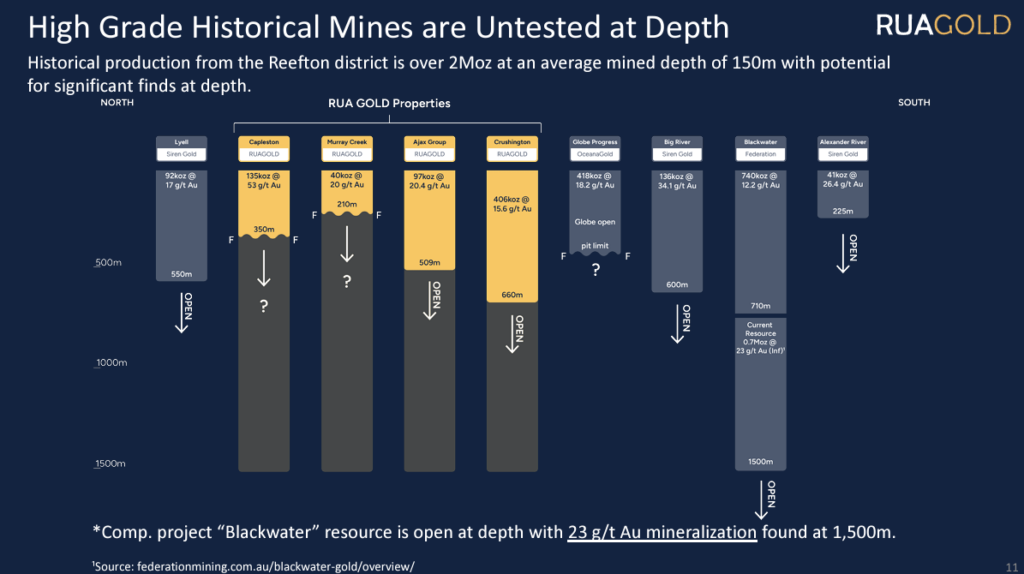
OceanaGold (TSX: OGC), another major player in New Zealand’s gold mining industry, has been active in the region. While their Globe Progress Mine near Reefton closed in 2016 after producing about 610,000 ounces of gold over its 10-year life, the company has been investing in rehabilitation efforts. Other efforts by the multinational gold miner in the region include a joint venture to the north of Reefton, referred to as the Sam’s Creek project.
The resurgence in gold mining has also attracted new entrants to the industry. Rua Gold (CSE: RUA), for example, is exploring the Reefton district, with six separate projects located in the region. Four of those regions have had extensive historical production, including at Capleston, where 135,000 ounces of gold at an average grade of 53 g/t gold has been pulled out of the ground, and at Crushington, where 406,000 ounces of gold with an average grade of 15.6 g/t gold has been mined.
READ: RUA Gold: A Promising Player in New Zealand’s Gold Mining Renaissance
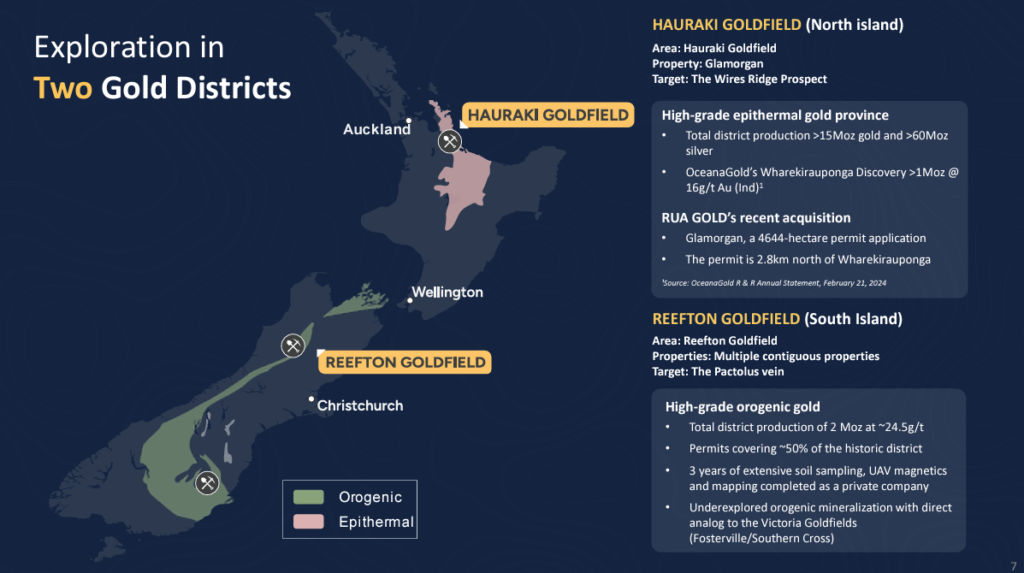
At Capleston, the company has conducted extensive soil sampling and geological mapping, and has made a promising new discovery called the Pactolus vein. Channel sampling at surface at the Pactolus vein has returned assays that include 26.4 g/t gold over 7.0 metres, including two intervals that intersected in excess of 1.0 ounce per tonne over 1.0 metre.
READ: RUA Gold Begins Drill Testing High-Grade Targets At Murray Creek
Modeling of this vein has been established following a total of 26 drill holes being conducted here in recent years, amounting to 4,377 metres of drilling. Further exploration remains ongoing, with Rua currently drill testing its projects across the Reefton region.
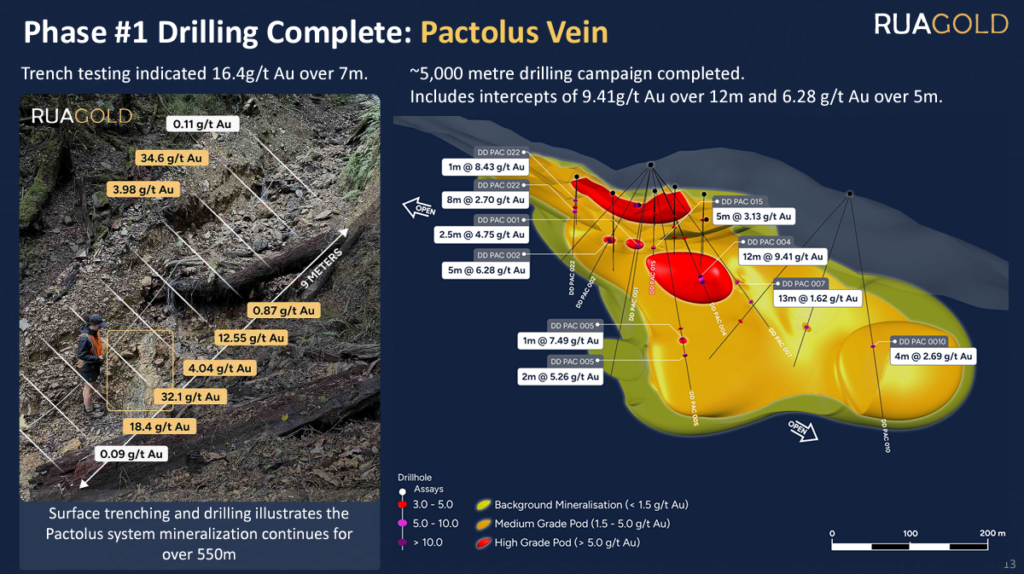
In addition to these larger operations, the West Coast is home to numerous smaller-scale miners and prospectors. Alluvial gold mining, which involves extracting gold from river sediments, remains an important part of the region’s mining industry. The West Coast produces about 90% of New Zealand’s alluvial gold, with an export value of around $80 million.
As gold prices remain high and exploration continues, the West Coast’s gold mining industry appears poised for continued growth. With a focus on innovation, environmental stewardship, and community engagement, the sector is working to balance economic benefits with responsible practices, ensuring that gold mining remains a vital part of the West Coast’s economy and heritage.
FULL DISCLOSURE: Rua Gold is a client of Canacom Group, the parent company of The Deep Dive. The author has been compensated to cover Rua Gold on The Deep Dive, with The Deep Dive having full editorial control. Not a recommendation to buy or sell. Always do additional research and consult a professional before purchasing a security.





